The PESO Model: A Smarter Way to Market Your Brand
March 24, 2025
How Paid, Earned, Shared & Owned media work together to grow your business.
The world of media can be overwhelming, especially when you're trying to determine the best way to market your business. Enter the PESO model—a framework that categorises media into four distinct types: Paid, Earned, Shared, and Owned. Understanding how these work together can help you build a strong marketing strategy that drives brand awareness, engagement, and conversions. Let’s break it down.
Owned Media: Your Brand’s Digital Home
Owned media includes content and platforms that your brand controls—your website, blog, newsletter, and social media accounts.
This is the gold standard of marketing assets—the most valuable data you can ever own. Unlike other media types, owned media gives you complete control over your message, audience insights, and long-term brand growth. It’s the foundation that fuels every other part of your marketing strategy.
Key Owned Media Assets:
- Website content – Your website is often the first place potential customers visit. Blog articles, landing pages, and help articles are all part of your owned media strategy. (Read more about content strategy in our blog on Always-On vs. Campaign Marketing.)
- Social media accounts – While you don’t control how content is distributed, you do control the message you put out.
- Newsletters – Email marketing remains one of the best ways to engage with your audience on your terms.
Owned media is excellent for nurturing existing audiences but isn’t always the best way to reach new customers. That’s where the other parts of PESO come into play. Learn more
about our content marketing services.
Paid Media: Expanding Your Reach
Paid media is any exposure you pay for—from digital ads to sponsored content. It’s a great way to get in front of new audiences quickly and drive targeted traffic to your owned media.
Types of Paid Media:
- Social media ads – Platforms like Facebook, Instagram, and LinkedIn allow you to reach highly specific audiences based on demographics and interests.
- Search Engine Advertising (SEA) – Google Ads and other pay-per-click (PPC) campaigns help you capture search intent and drive conversions.
Shared Media: The Power of Social Engagement
Shared media encompasses all social media
content about your brand that isn’t directly posted by you. This includes customer posts, reshares, user-generated content, and influencer collaborations.
Examples of Shared Media:
- Customer reviews and testimonials
- Social media shares and mentions
- Community-driven discussions on platforms like Facebook groups or Reddit
Encourage engagement by creating shareable content—videos, infographics, and interactive posts tend to perform well. Discover
how we build high-impact social strategies.
Earned Media: Your Brand in the Spotlight
Earned media is coverage that your brand receives organically, whether through PR efforts, influencer shoutouts, or customer advocacy. Unlike paid media, you don’t have control over earned media, but it’s one of the most powerful forms of credibility.
Examples of Earned Media:
- Press coverage – Being featured in news articles or industry blogs.
- Influencer endorsements – When influencers talk about your brand without a paid partnership.
- Word-of-mouth and referrals – Organic recommendations from happy customers.
Earned media is hard to control, but you can influence it by creating high-quality, shareable content and building relationships with journalists and influencers. Want to grow your brand’s credibility? Let’s talk.
Bringing It All Together: The PESO Strategy
Each component of the PESO model is powerful on its own, but the magic happens when they work together. For example:
- A blog post (like the one you're reading) (owned media) can be promoted through social ads (paid media), shared by your audience (shared media), and picked up by a news outlet (earned media).
- A paid partnership with an influencer (paid media) can lead to organic shares (shared media) and PR opportunities (earned media).
Start with owned and shared media—they’re low-cost and effective. As your strategy matures, incorporate paid and earned media to amplify your reach and results.
Looking for a marketing strategy that integrates the PESO model seamlessly? See how we can help
or learn more
about Soqual.

As 2025 starts to wind down, many businesses are already looking ahead to 2026, especially when it comes to marketing and social media . The reality? The most effective social strategies don’t happen by accident. They’re planned, intentional, and backed by clear data. Whether you’re a small business owner trying to get more traction online or a marketing manager setting next year’s budget, October is the perfect time to start laying the groundwork. By preparing now, you’ll step into the new year with confidence, clarity, and a content calendar that actually works. Here’s how to get started. Reflect on What Worked (and What Didn’t) This Year Before you start mapping out 2026, take an honest look at your current social media performance. What campaigns delivered results? Look at hard metrics like engagement rate, website traffic, and conversions. What platforms gave you the most return? If you’ve been spreading yourself thin across too many platforms, now’s the time to streamline. What content resonated with your audience? Which posts got saved, shared, or commented on? Those are your clues for next year. Pro tip: A simple audit can highlight which areas deserve more investment and which ones you can confidently let go. At Soqual , we call this strategic pruning, keeping what works and cutting the rest so you’re not wasting time or budget. Set Clear, Measurable Goals A vague goal like “grow our social media” won’t cut it in 2026. Instead, focus on specific, measurable outcomes tied to your broader business objectives. For example: Increase Instagram engagement by 20% by June Generate 50 qualified leads per month through LinkedIn ads Drive 30% more traffic to your website from organic social content When your goals are this clear, it’s easier to track progress and prove ROI, both to yourself and your stakeholders. Map Out Your 2026 Content Calendar The businesses with the most consistent, effective social presence aren’t scrambling each week for what to post. They’re working from a planned, strategic content calendar. Start by thinking about: Seasonal campaigns: e.g., Christmas, EOFY, Valentine’s Day, Mother’s Day Industry-specific dates: key events, product launches, awareness weeks Evergreen content pillars: the themes your brand is built on Example: If you’re a boutique winery, your calendar might feature summer tasting events, vintage updates in March, and Father’s Day gifting campaigns in September. By having these mapped out early, you can batch content creation , secure photographers and videographers ahead of time, and reduce last-minute stress. Budget for Paid Social Early Organic reach is great, but in 2026, paid social will continue to be essential for growth, especially with algorithm changes and increased competition. Consider: Brand awareness campaigns to reach new audiences Retargeting ads to nurture warm leads Conversion-focused campaigns with clear calls to action Allocating a budget now means you can run tests in Q1, gather data, and scale your spend strategically throughout the year. Prepare for Key Changes in 2026 The social media landscape is never static and 2026 will bring new trends and challenges. A few to keep on your radar: Under-16 Social Media Ban: Coming into effect in December 2025, this will reshape how brands target younger audiences and manage privacy. AI-driven personalisation: Expect smarter algorithms, but also a need for human oversight to keep content authentic. Short-form video dominance: TikTok and Instagram Reels aren’t going anywhere, but quality will matter more than quantity. By staying ahead of these shifts, your brand won’t be scrambling to react later. Get Expert Support Planning a strong social strategy takes time, insight, and the right tools. If you’re feeling overwhelmed or unsure where to start, that’s where we come in. At Soqual , we help businesses: Audit their current social media performance Build tailored strategies aligned with their goals Create engaging, high-quality content that actually converts Manage social platforms and campaigns from start to finish Think of us as your strategic partner, not just your content creators. Final Thoughts The last few months of the year are a golden opportunity to get ahead. By reflecting on what worked, setting clear goals, and planning your campaigns now, you’ll walk into 2026 with focus and direction. If you want a tailored social strategy that drives real results next year, let’s talk. Book a discovery call with Soqual today.

Marketing is changing faster than ever. The tools you used last year, the content that worked, the ads that pulled in sales, none of that guarantees success this financial year. If your strategy feels stuck, it’s time to rethink. Because what got you here won’t get you there. Why FY25/26 Is Different Consumers aren’t the same as they were last year. They’re tired of the same old short-form clips and hype. Instead, they want authenticity, real stories, and content that actually helps them. And it’s not just what people want. It’s how they shop. Today, purchase decisions are slower. People want proof, trust, and a sense of community before they commit. They want brands that get them, that speak directly to their needs, not a one-size-fits-all message. Technology is also shaking things up. AI content is everywhere, but originality is rare. If your content feels “fake” or copy-pasted, people will scroll right past it. And social platforms? Algorithms keep changing, meaning what worked last quarter might not work tomorrow. What’s Out and What Needs Rethinking Recycled Reels that chase trends without purpose Posting just to fill the calendar (hello, “consistency” without meaning) Generic influencer deals that don’t really fit your brand Ads running without strong creative or offers behind them These won’t cut it anymore. Audiences see through it, and worse, they tune out. What You Should Be Doing Instead Build a strategy-first marketing ecosystem. Start with your business goals, then craft a multi-channel approach; organic, paid, email, partnerships, that works together, not in silos. (Learn more about our Marketing Strategy services ). Create content with real purpose. Go deeper than virality. Tell your brand story. Mix evergreen value with timely trends, always in your unique voice. (Check out our Content Creation expertise). Invest in design and production. Beautiful, custom content still stands out, especially on Reels and ads. Cookie-cutter templates won’t cut it. (Explore our Social Media and Branding services). Prioritise community and conversion. Build your own spaces: email lists, SMS, loyalty programs, where real connection happens. Use UGC, testimonials, and case studies to build trust. (We help with Email Marketing and community building). Experiment smartly. Try new formats early, learn fast, and adapt. Don’t Forget Your Website and SEO All these efforts need to drive traffic and conversions back to your site. A well-optimised website and strong SEO strategy are crucial to keep your brand discoverable in the new financial year and beyond. (See how our Website Design and Google Ads and SEO services can boost your digital presence). Ready for Your Marketing Glow-Up? If your marketing strategy looks like it was made for last year, that’s because it was. At Soqual , we’re already ahead of the game. We create future-proof strategies, scroll-stopping content, and campaigns that work across channels, designed for what’s working now and what’s coming next. Want to stay ahead of the curve? Get in touch. Let’s make your marketing strategy work harder this financial year.


